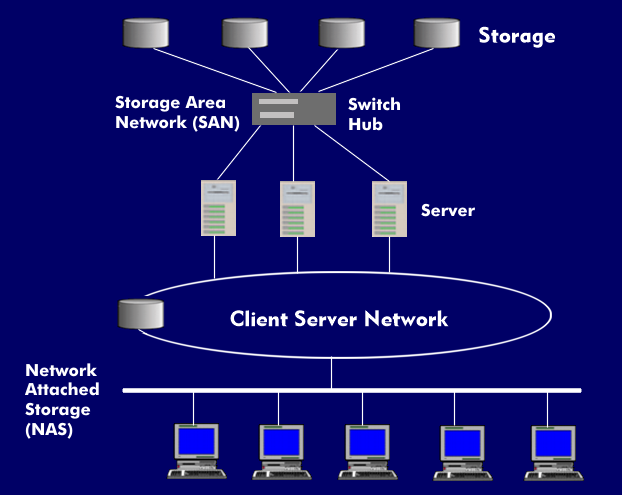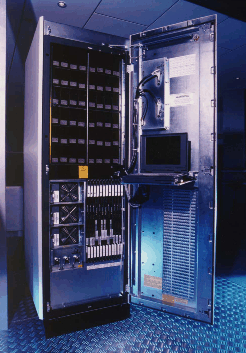storage area network (SAN)
Storage Area Networks (SAN) are dedicated storage networks that interconnect and decouple servers and storage systems via broadband networks such as Fibre Channel.
Requirements for storage networks
Important aspects of storage networks include unlimited host access to all mass storage devices, centralized sharing of high- performance storage systems, load balancing between available backup devices, centralized device monitoring andconfiguration, increasing the amount of data that can be managed, ensuring that all data is available at all times, and keeping the load on local networks low. Storage networks must always be available, even if one server fails. The data can then still be accessed via other servers. In addition, fail-safety and scalability are further striking characteristics of storage networks.
The use of storage networks is aimed at backups and restoring data in connection with the globalization of networks. Storage networks are based on separate backup networks through which all backup systems are interconnected. The storage network is a supplement to the LAN, in which operations are performed on and with stored data in the background, such as indexing a database or backing up corporate data. Such a network relieves the actual local network. Centrally managed storage networks can make data accessible across multiple storage networks, regardless of which computer systems or applications are used.
The standards for storage networks
Storage networking is underpinned by formal and de facto standards, with several industry organizations producing a wide variety of standards. In addition to pure storage area networks (SAN), which use their own high-speed networks with Fibre Channel, there is network attached storage( NAS), which uses existing corporate networks, and the classic variant with direct attached storage( DAS).
A high-performance storage infrastructure can also be built on well-known high-speed standards such as InfiniBand, Internet Small ComputerSystem Interface over IP( iSCSI), Fibre Channel over Ethernet ( FCoE), Fibre Channel over IP( FCIP), Internet Fibre Channel Protocol ( iFCP), Small Computer System Interface( SCSI) and also over Ethernet, allowing network configurations based on the IP protocol, i.e. Storage over IP ( SoIP) and Ethernet Hard Drive with individual IP addressing of individual hard disks.
In terms of interfaces, infrastructural interfaces that allow a logical view of the SAN network are crystallizing. These include: X/Open Backup Service API (XBSA), Network Data Management Protocol ( NDMP), Removable Storage Management (RSM), Return Node Identification (RNID), Return Topology Information (RTIN), Simple Network Management Protocol ( SNMP), Application Programming Interface (API), Data Management API (DMAPI), Open Database Connectivity( ODBC) and ANSI Fibre Channel Fabric Element MIB ( FE-MIB).


